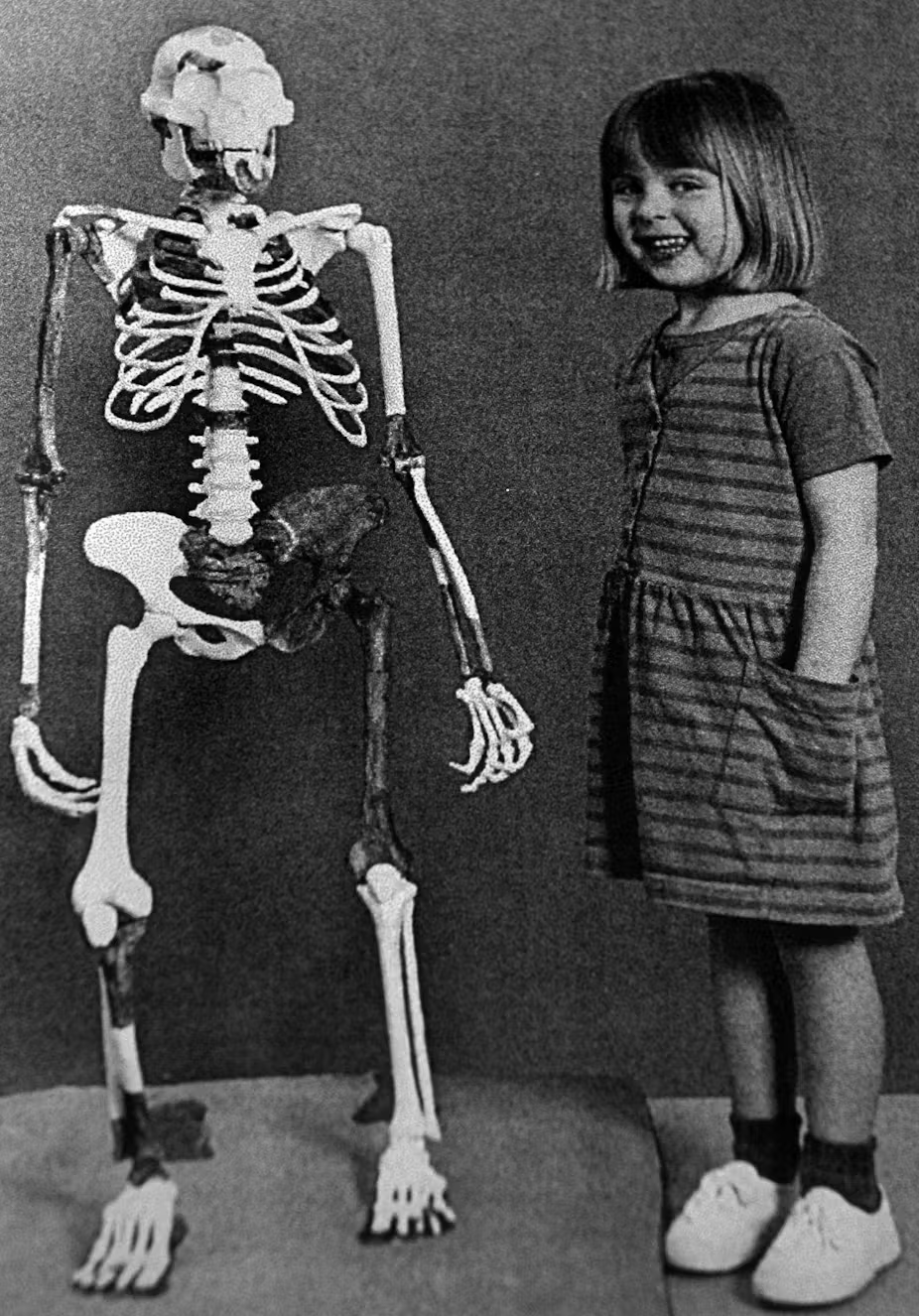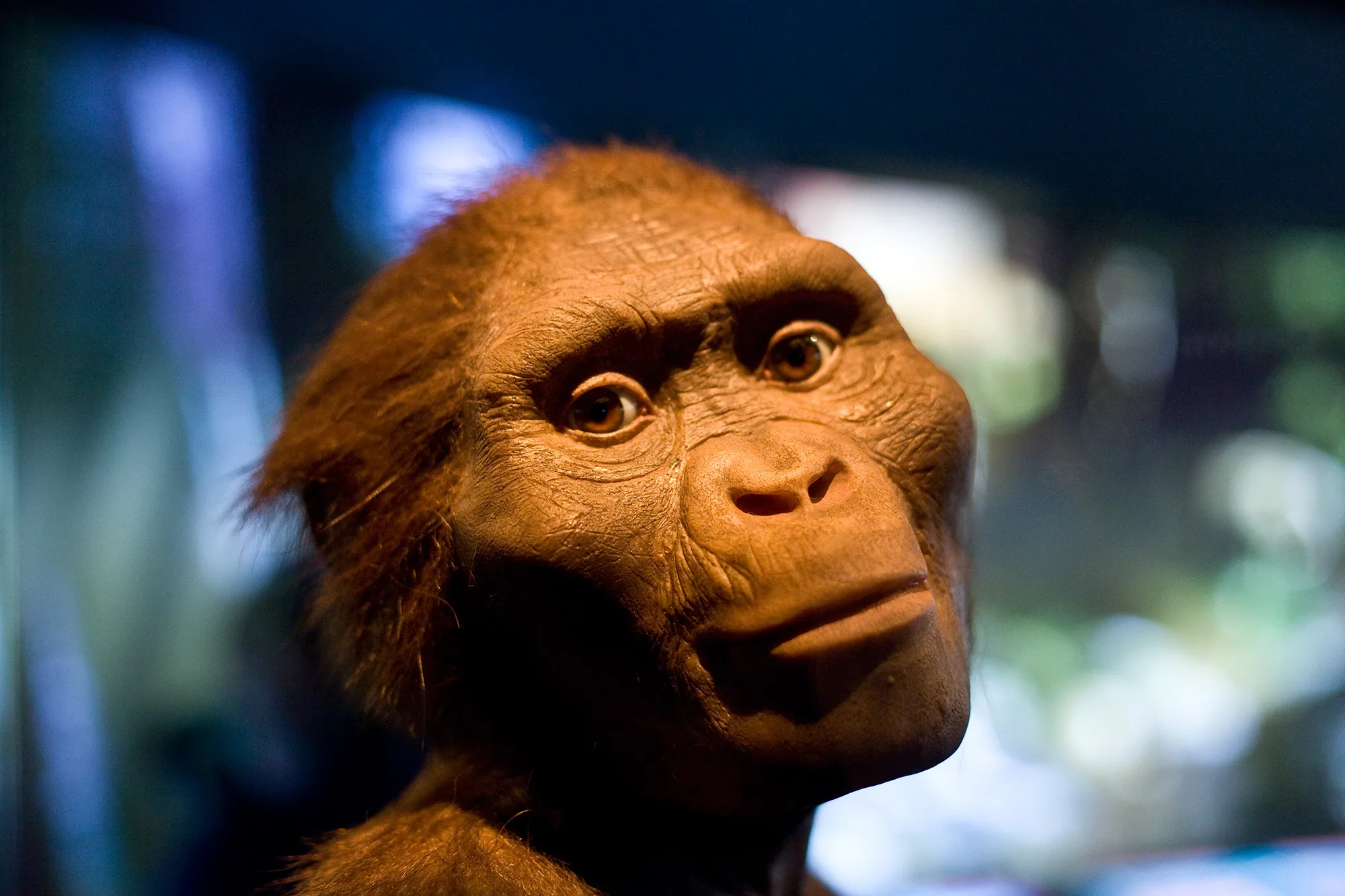In 1974, in the remote badlands of Hadar, Ethiopia, an American paleoanthropologist Donald Johanson and a graduate student, Tom Gray made a groundbreaking discovery: the fossilized remains of an early human ancestor called “Lucy.” This discovery significantly altered the scientific understanding of human evolution and continues to influence the field today.
Discovery and Initial Findings
While conducting a survey in Hadar, Johanson and Gray stumbled upon a piece of an elbow joint jutting from the dirt in a gully. This small find led to the unearthing of 47 bones from a single individual, later nicknamed “Lucy” after the Beatles’ song “Lucy in the Sky with Diamonds,” which was playing during their celebratory evening. Lucy’s skeleton was dated to 3.2 million years ago, making her the oldest and most complete human ancestor discovered at that time.
Lucy belonged to the species Australopithecus afarensis, an extinct hominin that lived between 3.8 million and 2.9 million years ago in regions that are now Ethiopia, Kenya, and Tanzania. The two primary characteristics that distinguish humans from other primates are large brains and bipedalism (the ability to walk upright on two legs). Before Lucy’s discovery, it was widely believed that large brains had evolved first. However, Lucy’s small brain and clear adaptations for bipedalism challenged this notion.
Physical Characteristics and Significance
Upon reconstructing her skeleton in Cleveland, Ohio, it became evident that Lucy stood upright and had a small brain, not much larger than that of a chimpanzee. A photograph taken of a four-year-old girl standing next to Lucy’s skeleton illustrated Lucy’s small stature and brain size. Despite her small size, Lucy was an adult at the time of her death, as evidenced by her teeth and bone development.

Lucy’s bones revealed several adaptations for upright posture and bipedal locomotion. Her femur (upper leg bone) was angled, her spine was S-curved, and her pelvis was short and bowl-shaped. These features are also present in modern human skeletons, allowing for stable bipedal walking and running. The discovery of fossilised footprints in Tanzania, dated to 3.6 million years ago, further confirmed that bipedalism preceded the development of large brains in human evolution.
Revisiting Lucy’s Appearance
Lucy has often been depicted in popular culture and scientific reconstructions as covered in thick reddish-brown fur, with an exposed face, hands, feet, and breasts. However, recent advancements in genetic analysis suggest that early humans and their ancestors might have lost most of their body fur between 3 to 4 million years ago, long before adopting clothing around 83,000 to 170,000 years ago. Thus, Lucy may have had little to no body hair, presenting a very different image from the traditional furry depiction.
The loss of body hair in early humans was likely influenced by a combination of factors, including thermoregulation, delayed physiological development, attracting sexual partners and warding off parasites. Environmental, social and cultural factors may have encouraged the eventual adoption of clothing.
Furthermore, Lucy’s representations in media, textbooks, and museums often reflect modern cultural biases rather than historical accuracy. These depictions reveal more about contemporary views on gender, sexuality, and family dynamics than about Lucy herself.
Lucy’s discovery and subsequent research have profoundly influenced the understanding of human evolution. Her skeleton not only challenged previous assumptions about the sequence of evolutionary traits but also provided a tangible connection to our ancient past. As technology and methodologies advance, interpretations of Lucy continue to evolve, revealing as much about our present cultural perspectives as about our ancient origins.
